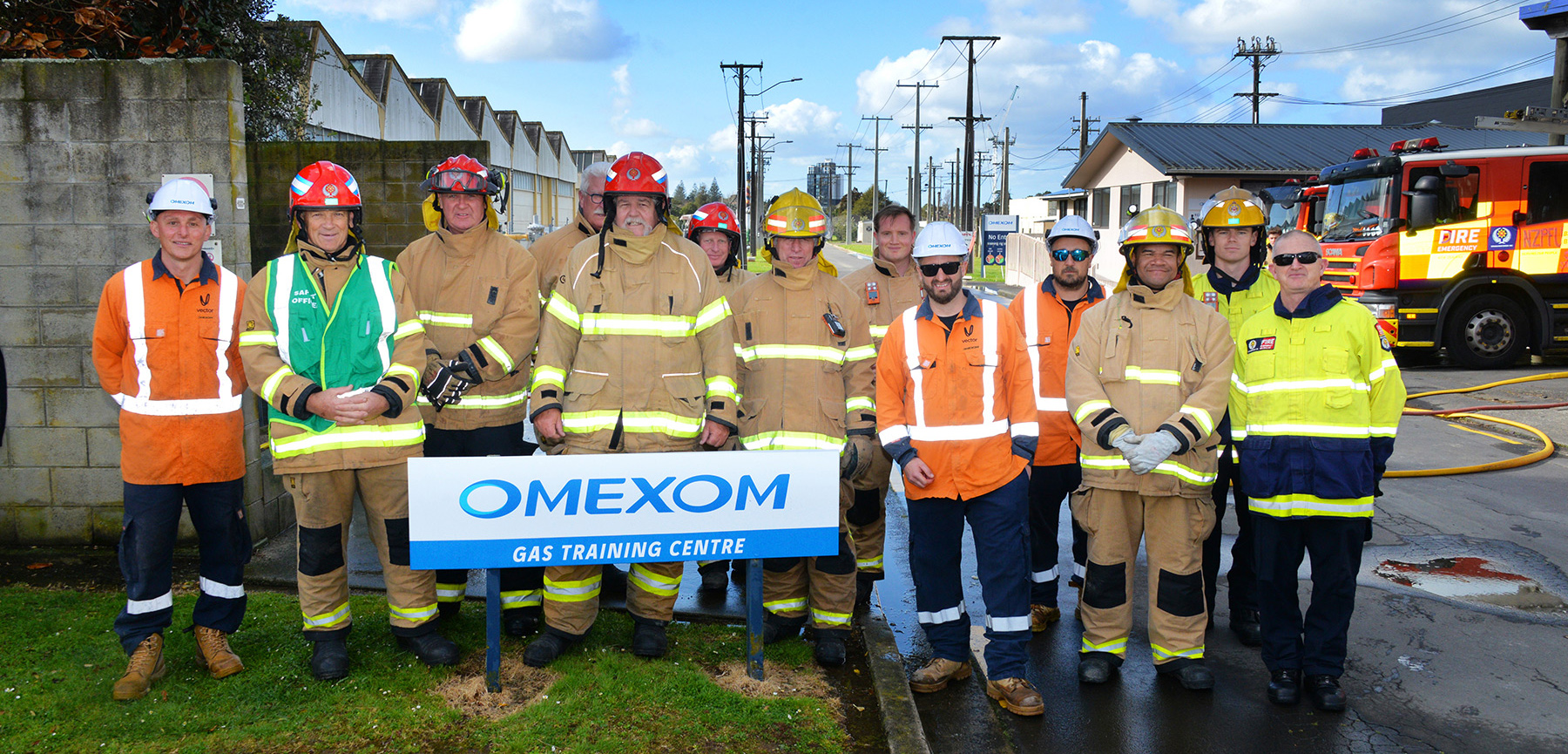Omexom joint training with FENZ

Recently, Fire Emergency New Zealand (FENZ) crews were offered essential insights for ensuring a safe and coordinated emergency response to handle gas-related incidents. The training was provided by Omexom New Zealand’s Gas Services Perimeter.
The training is important to equip first responders with the technical expertise and operational readiness needed to handle high-risk incidents. Omexom shared insights into infrastructure layouts and isolation protocols, while fire crews contributed their experience and expertise in hazard containment and public safety.
A critical part of this training involved understanding the differences between natural gas and LPG (liquefied petroleum gas). Natural gas, used on the Vector network, is primarily methane and lighter than air, so it disperses quickly. LPG – composed of propane and butane – is heavier and tends to accumulate in low-lying areas, increasing the risk of explosion.
Firefighters must be familiar with the combustion properties and hazards of each, including the flammability range, ignition temperature, and potential for asphyxiation or flash fires.
The training also covered practical techniques such as the squeeze-off of polyethylene pipelines up to 25mm, which allows crews to isolate damage to gas pipelines safely and swiftly. Stabilising gas within structures/buildings and executing proper evacuation procedures are emphasised to protect both responders and the public.
The use of personal gas detectors is another vital component, enabling crews to detect invisible threats and monitor gas concentrations in real-time. Firefighters were also trained in the use of dry powder fire extinguishers, which are highly effective for suppressing flammable gas fires without exacerbating the hazard.
Beyond technical skills, this training establishes stronger connections between FENZ and Omexom, who is the service provider for the Vector gas network. With improved communication, cooperation, and coordination during emergencies, the risk of escalation is likely to be reduced.
This integrated approach ensures that when a gas-related incident occurs, all parties are aligned, informed, and capable of executing a swift, safe, and effective response — ultimately enhancing community resilience and minimizing risk to personnel, public and property.
